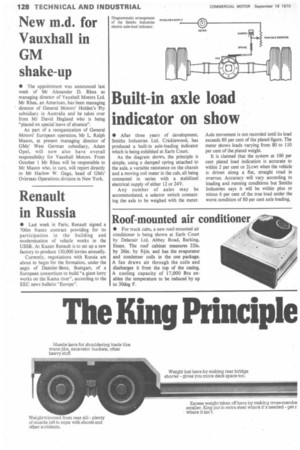Built-in axle load indicator on show
Page 130

If you've noticed an error in this article please click here to report it so we can fix it.
• After three years of development, Smiths Industries Ltd, Cricklewood, has produced a built-in axle-loading indicator which is being exhibited at Earls Court.
As the diagram shows, the principle is simple, using a damped spring attached to the axle, a variable resistance on the chassis and a moving coil meter in the cab, all being connected in series with a stabilized electrical supply of either 12 or 24V.
Any number of axles may be accommodated, a selector switch connecting the axle to be weighed with the meter. Axle movement is not recorded until its load exceeds 80 per cent of the plated figure. The meter shows loads varying from 80 to 110 per cent of the plated weight.
It is claimed that the system at 100 per cent plated load indication is accurate to within 2 per cent or 24-cwt when the vehicle is driven along a flat, straight road in overrun. Accuracy will vary according to loading and running conditions but Smiths Industries says it will be within plus or minus 6 per cent of the true load under the worst condition of 80 per cent axle loading.






























































































































































































































































































































































































